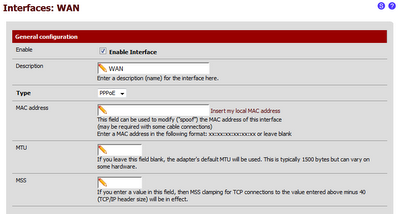PFSense Installation
Steps
Now we discussed here about the installation of PFSense Step
By Step with Images.
PFSense is open source BSD.
1-
Download PFSense from any mirror or server that
give you better response. And also multiple
link given here.
2-
After Downloading ISO. This ISO burn into the
disk.
3-
After Completing the burning process insert disk
into the CD-ROM.
Note: If u have 2 Internet or WAN
connection from different ISPr, Use 3 LAN cards
before installation. Use minimum 512 MB of 2.4 processor and 20 Gb HD for better
performance and use LAN cards On Gbyte.
4-
After inserting Disk into the CD-ROMs. Boot CD
from CD-ROMs. Automatically loading files.
5-
After boot up pfSense will existing you with a
sequence of alternatives, you can use the standard by pushing the Enter.
6-
Now allow pfSense a while to do many factors
like install the computer file file program, etc…. After it’s done you have 10
a few moments to media I on your key pad to release the specialist, otherwise
pfSense will automatic start (we do not want automatic boot).
7-
On this display the specialist will allow you to
modify some factors like: gaming system typeface and key map. Since I do not
wish to modify any of the non-payments choose Take these configurations.
8-
On this screen we can choose between installing
using the defaults, do a custom install, or rescue an existing install. The
defaults will work, select Quick/Easy Install.
9-
This installation will occupy the entire hard
drive which is why I select OK to
continue.
10-
Installation starts………………..
11-
Select properly, in order to select the right
choice on this display you have to be completely conscious of the components
you are using. Since the system I am using to set up pfSense on has one brand I
select Uniprocessor Kernel(one processor).
12-
Restart and eliminate the CD/DVD from the
generate plate.
13-
One the first factors pfSense will do is make an
effort to brand the system interfaces(remember their names). You will also be
provided with the concern ‘Do you want to set up VLANs now ?’, since I rather
set up VLANs via the web interface I entered N and media on the Get into key.
14-
Move on to the system connections, automatic
recognition never work for me instead I entered the name of the system
interface and media get into. Both of the connections were recognized and given
the brands of em0 and em1. Pfsense will try determining one interface to the
LAN interface and the second one to the WAN interface, type Y to continue.
15-
Let me crack the information, you have just set
up pfSense to a disk generate and allocated both of the system connections to
their appropriate responsibilities. In the monitor shot below you can see the
IP details for both the LAN and WAN connections.












